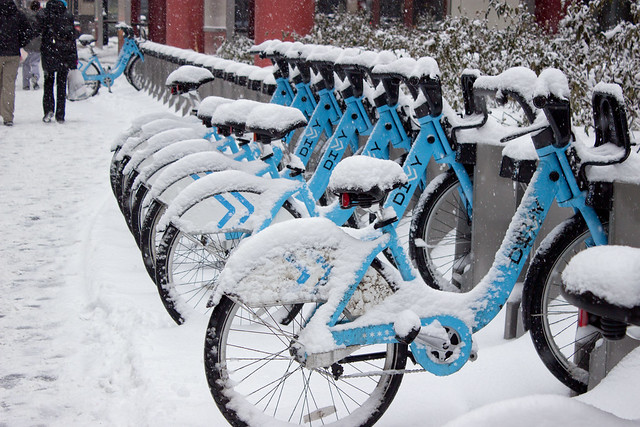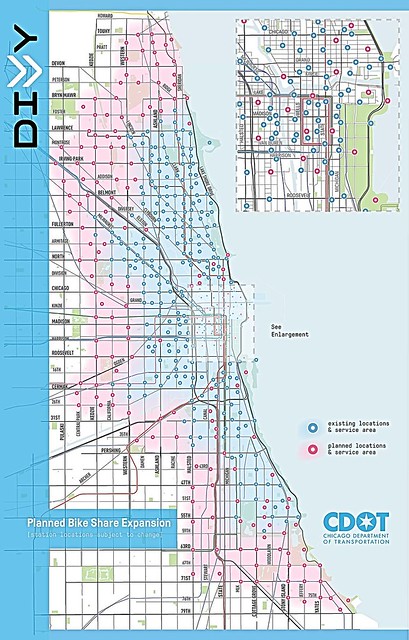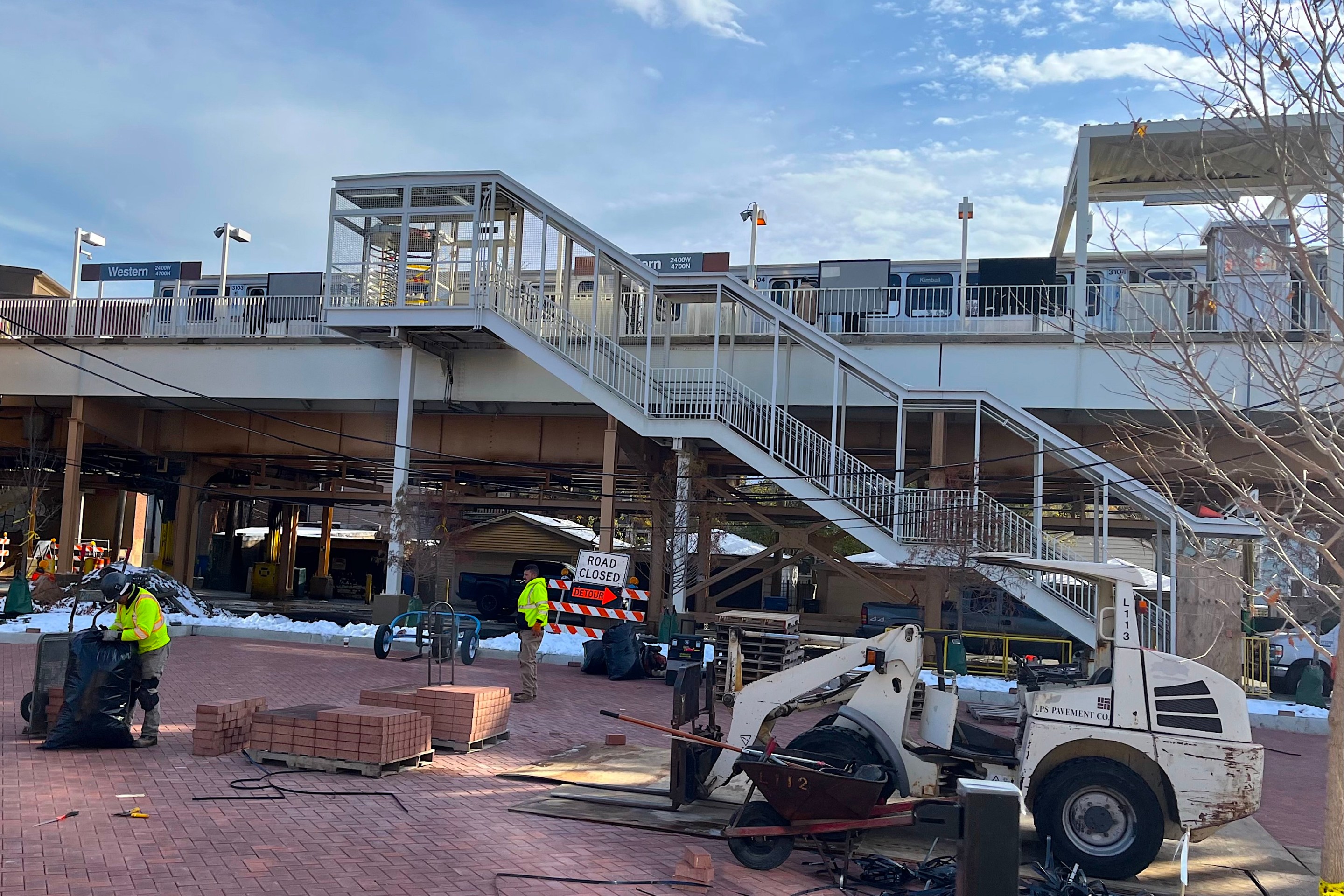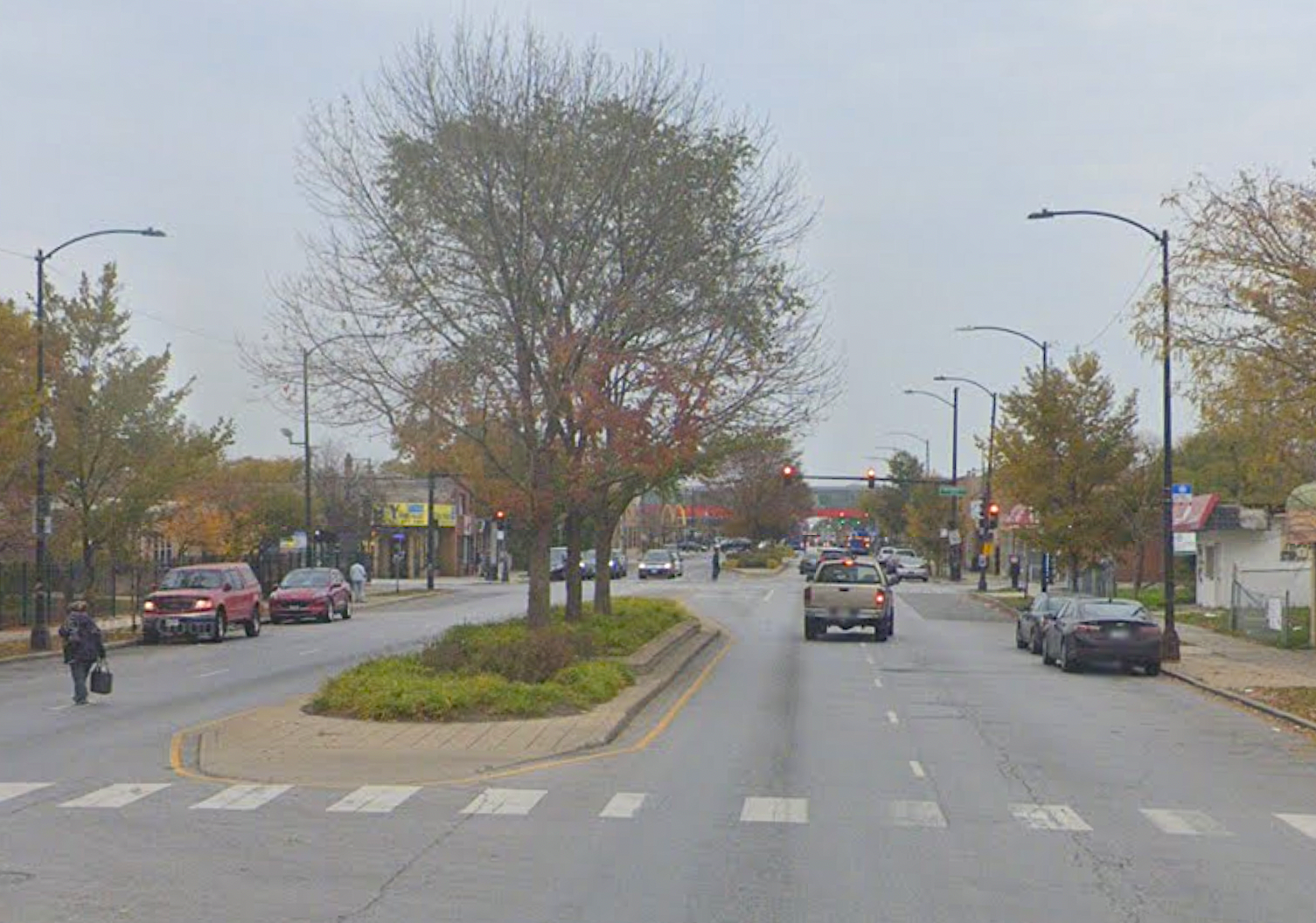
Back in September 2014, former Illinois governor Pat Quinn announced a $3 million grant to help expand the Divvy system into Oak Park and Evanston, as well new areas on Chicago’s West Side and in the Rogers Park neighborhood. The plan was to install 70 stations and 700 bikes by spring or summer of 2015.
Last summer, Chicago added 175 stations and 1,750 bikes, bankrolled by federal and city money, which expanded the original coverage area in all directions. But the state-funded equipment still hasn’t materialized yet.
Today, after introducing to City Council two intergovernmental agreements with the suburbs regarding Divvy, Mayor Emanuel announced a change to the state-funded expansion plan. Instead of 70 stations and 700 bikes, 96 stations and “more than” 250 bikes will be added to the system, with the roll-out taking place next summer.
Oak Park and Evanston, which are providing a combined $200,000 in matching funds to help fund the expansion, will be getting 13 and eight stations, respectively. Chicago, which is providing $550,000 in matching funds, will get 75 stations within the city.
Adding more stations and fewer bikes means that this year’s expansion will grow the service area faster, to include more Chicago neighborhoods than originally planned. The city had previously announced that the predominantly African-American, low-to-moderate-income Garfield Park and Austin communities on the West Side would be getting stations, as well as new sections of ethnically and economically diverse Rogers Park on the Far North Side.
However, today Emanuel said the expansion will also include several LMI or middle-class neighborhoods on the South and Southwest Sides. These include Burnside, Chatham, Greater Grand Crossing, Brighton Park, and Englewood. All of these are heavily African-American, except for Brighton Park, which is mostly Latino.

Like most other bike-share systems across the country, Divvy’s membership has skewed while, male, affluent, well educated, and young. To help address this issue, last summer Chicago launched the popular Divvy for Everyone equity program, which offers one-time, $5 memberships to low-income residents and waives the usual credit card fee.
Last month, when the normal membership fee was hiked from $75 to $99, the city announced that members will be able to pay in monthly installments of $9.95, which eliminates a barrier for low-income residents who would like to sign up for a second year, but may have difficulty coming up with the entire fee at one time. However, the installment plan costs a total of $119.40 for the year, about 20 percent more than paying in a lump sum.
Expanding to more LMI neighborhoods and communities of color is a step in the right direction for making Divvy more equitable. It certainly fits into Emanuel’s strategy of trying to improve his standing with the city’s African-American community in the wake of the Laquan McDonald cover-up scandal and other police shooting cases.
However, shifting the focus of this year’s expansion is that there will be a lower ratio of bikes to stations. In the past, Divvy has added ten bikes for every station, but the expansion will only add about 2.6 bikes for each new station. After the expansion, the system will have about 5,000 bikes and 571 stations, which will lower the overall ratio from 10:1 to about 8.75:1. That might make it a little more difficult to check out a cycle at popular stations during peak usage times.
The city has not yet released a map of the new coverage area, or announced what the station density will be. It’s likely that the new areas within the city will get the same generally half-mile spacing that was implemented during the 2015 expansion. When the first 300 stations was installed in 2013, downtown and several dense, relatively affluent North Side neighborhoods generally got quarter-mile station spacing, which makes the system more convenient to use.
As part of today’s announcement, the city had some good news about Divvy ridership. Last year, the system recorded a 30 percent increase in the number of trips taken, with almost 3.2 million trips in 2015, compared to 2.4 million in 2014. That’s not a big surprise, since the number of stations and bikes increased by about 58 percent last year, from 300 stations and 3,000 bikes to 475 stations and 4,750 bikes.
The city released one more interesting stat. Over 900 rides were taken this past Sunday, which a high temp of 27 degrees Fahrenheit and a low of just 4 degrees. That just confirms what we already knew: Chicago cyclists are a hardy bunch.
Updated 1/13/16 11 p.m. A news release from the mayor's office stated that, after this year's expansion, the system will have "more than 5,000 bikes." However, according to Chicago Department of Transportation spokesman Mike Claffey, the city expects to reach about 5,700 bikes by this summer. Claffey did not say where the funding for the additional bikes will be coming from.
It appears that this would make Divvy the second-largest bike-share system in North America in terms of number of bikes, overtaking Montreal's Bixi system, which has 5,200 bikes. Divvy would still be way behind New York's Citi Bike, which has over 7,000 cycles, and is slated to expand to 12,000 bikes by 2017, according to Streetsblog NYC's Ben Fried.





